Water trap for sewage: purpose, types, problems
Why do you need a hydraulic valve? What is a bottle or dry water seal for sewage? What problems affecting the functionality of hydraulic gates, the owner of a house or apartment may face? Let's figure it out.
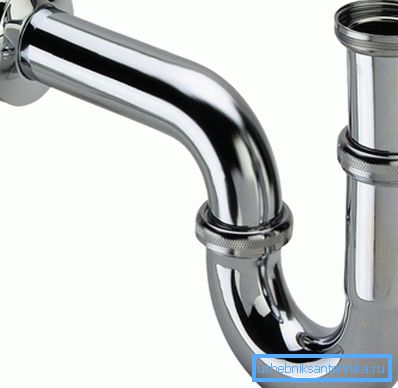
Why do you need it
What is a sewage trap for?
So that the air masses could not move freely between the waste system and the residential or industrial premises. (See also the article Air valve for sewage: features.)
Thrust is inevitably created in any riser; warm humid evaporation, methane and other products of the biological decomposition of organic components of wastewater rise up.
What smells like an unforgettable TV star used to say, this is all - I think you can not explain.
Please note: some types of shutters combine two functions. They prevent the ingress of odors into the room and block the way to sewage from sewage during blockages.
How it works
The valves can be divided into the actual hydraulic and dry. What is the difference - you can understand intuitively.
Water
How does the water or hydraulic valve in the sewer - it is easy to guess from its name. In essence, this is simply a stretch of drainage system, laid with a counter-tilt; constantly standing in it water prevents the movement of gases.
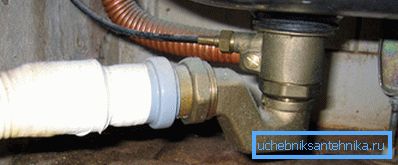
Depending on the configuration, two types of valves can be distinguished:
| Type of | Description |
| Bottle | It consists of two cylinders of different diameters submerged in water. Used in the construction of siphons for sinks and sinks: unscrewing the bottom of the bottle siphon, it is easy to clean it from the accumulated debris. |
| Double turn | This type of shutter is even simpler in design: the bend of a knee or a flexible pipe holds some liquid in it. It is used where there is no need to filter wastewater. |
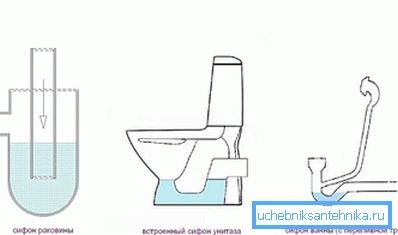
Dry
Unlike water, dry shutter does not need water in order to prevent the ingress of gases into the room. In essence, it is a hermetically closed non-return valve (above, if you remember, we mentioned the possibility of performing two functions with a shutter). The water column pressure opens this valve; as soon as the wastewater stops flowing - it closes.
Constructive solutions may use different physical principles.
Here are some examples:
- The spring-loaded membrane returns to its original position due to the elasticity of the stainless spring. The price of such devices is low, but low and their reliability.
- The pendulum bolt is held in the working position by its own weight.

- Some sewer ladders with a water seal use a float pattern of operation - something between a water gate and a dry gate. They are ideal for showers that are used with long breaks.
The shutter itself is a glass with a cylindrical outlet in the middle, which is usually due to the presence of an additional knee after it is filled with water; over release in a glass float floats. With long-term simple water dries up; rubber float sits in the release and reliably blocks the movement of gases.
Problems and Solutions
Understand that the hydraulic shutter stopped working is easy: you can't confuse the smell of sewage in an apartment.

What could be the reason for the inoperability of such simple structures?
Water evaporation
The simplest and most obvious case: standing in the knee water evaporated with a long absence of effluent. If the persistent odor of sewage meets you when you return from a vacation, most likely this is exactly what happened.
The problem will be solved by itself - just use the appropriate plumbing device for its intended purpose.
Water lock stall
Under this vague definition there is a very simple in terms of physics process: a sharp drop in pressure in the sewage system literally sucked the water out of the siphon under the sink or from the toilet bowl. Why is this happening?
When draining a large amount of water (the so-called volley discharge), a situation often arises when the flow of water fills the entire riser. It is clear that a front of high pressure air is formed in front of the flow; a vacuum is created behind it.
Note: in normal mode, the sewage system is perfectly adapted to such situations. For air leaks are fan bends - pipes that open directly onto the street. Thus, a typical sewer riser opens onto the roof of an apartment building.
However, two scenarios are possible when the operation of the funnel pipes is disrupted.
- In frosty winters, the risers simply freeze above the level of the roof.. Wet evaporation forms ice, which over time reduces the lumen of the pipe to zero.
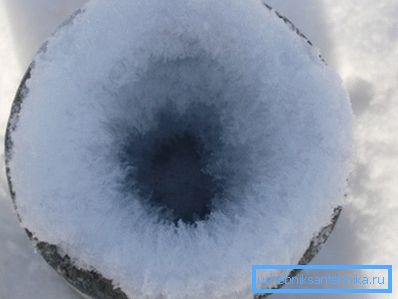
- Residents of the upper floors in the process of repair often completely dismantle the unused, in their opinion, risers above the tee.
What to do in each of these cases?
- Removing ice jams with your own hands is easiest, simply by pouring a bucket of hot water into the riser. In the future, the riser is insulated from the outside with foam shells, mineral wool or any other material.
- Instead of a disassembled standpipe, a vacuum valve can be installed — an uncomplicated device that lets air into the riser when the pressure in it drops but blocks the movement of gases in the opposite direction. The installation instructions are extremely simple: the valve is inserted into the tee top; tightness is ensured by a rubber seal. (See also the article Pipes for domestic sewage: features.)
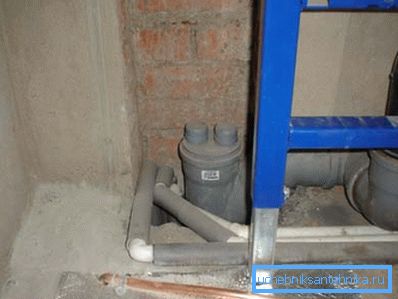
Lime deposits
A common disease of all dry valves is deposits on a rubber sealing gasket. They are washed off using any weak acid or alkali solution.
Conclusion
We hope that our material will help the reader in the selection and repair of home plumbing. Additional information on how a water lock for sewage can be arranged can be found in the video in this article. Successes!